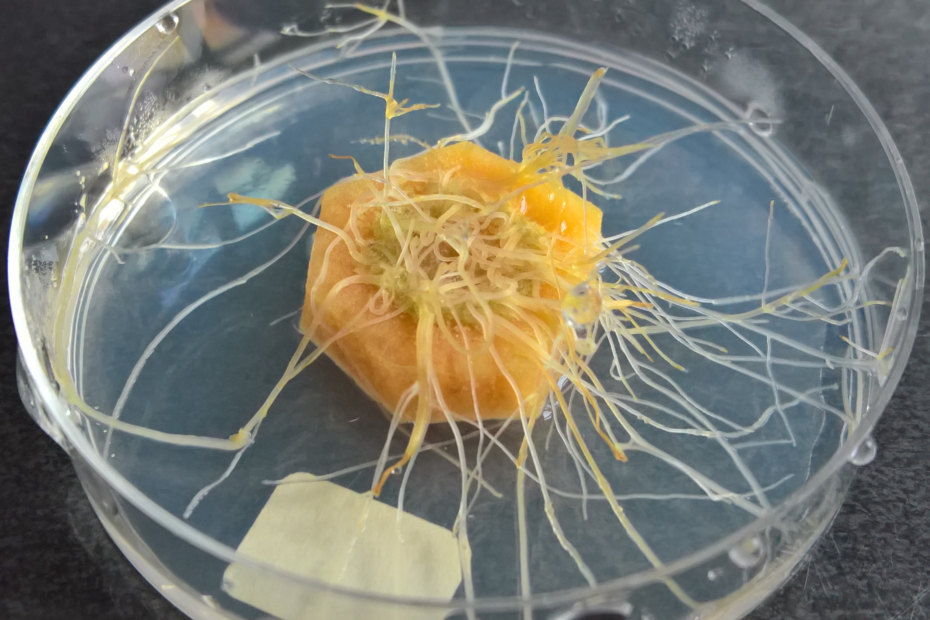Desmet S1,2*, De Keyser E3, Van Vaerenbergh J3, Baeyen S3, Van Huylenbroeck J3, Geelen D4, Dhooghe E3.
1 Flanders Research Institute for Agricultural, Fisheries and Food (ILVO), Plant Sciences Unit, Caritasstraat 39, 9090, Melle, Belgium.
2 Department Plant and Crop, Faculty of Bioscience Engineering, Ghent University, Coupure Links 653, 9000, Ghent, Belgium.
3 Flanders Research Institute for Agricultural, Fisheries and Food (ILVO), Plant Sciences Unit, Caritasstraat 39, 9090, Melle, Belgium.
4 Department Plants and Crops, Faculty of Bioscience Engineering, Ghent University, Coupure Links 653, 9000, Ghent, Belgium.
* Correspondence: siel.desmet@ilvo.vlaanderen.be
Abstract: Rhizogenic agrobacteria induce extensive root proliferation, in several economically valuable, dicotyledonous plant species, a phenomenon referred to as “hairy roots.” Besides their pathogenic nature, agrobacteria have proven to be a valuable asset in biotechnology and molecular plant breeding. To assess the potential of frequently used rhizogenic strains, growth in yeast extract glucose broth and antibiotic resistance was analyzed. Growth curves were established for Arqua1, NCPPB2659, LMG150, LMG152, and ATCC15834; and regression analysis of the exponential growth phase resulted in a reliable and standardized method for preparation of a bacterial suspension for inoculation. Cell density did not correlate with the timing of hairy root emergence. The highest number of hairy roots was obtained with an inoculum of 1 × 108CFU ml-1 for Arqua1, NCPPB2659, and LMG152. Cell density of ATCC15834 did not affect the number of hairy roots formed. The identity of the rhizogenic strains for plant transformation was verified in phylogenetic analysis using average nucleotide identity (ANI), which also provided insight in their genetic diversity within the Rhizobium taxon.
Keywords: Agrobacterium; Average nucleotide identity; Cell density; Growth curve; Hairy root; Ri plasmid
